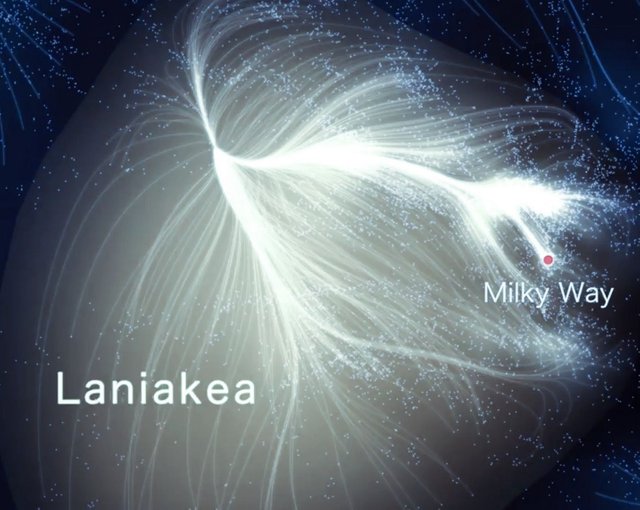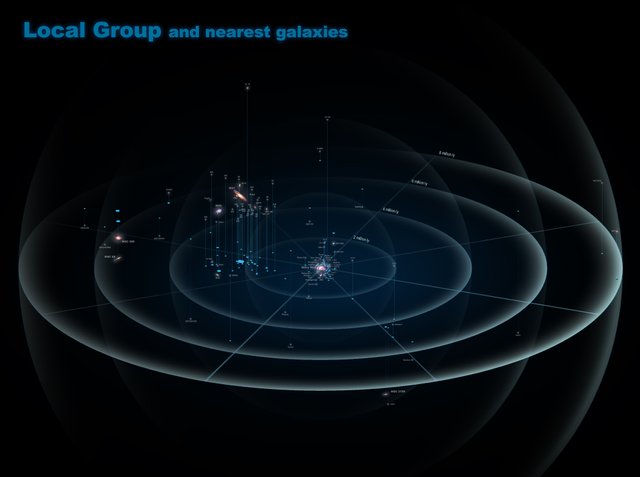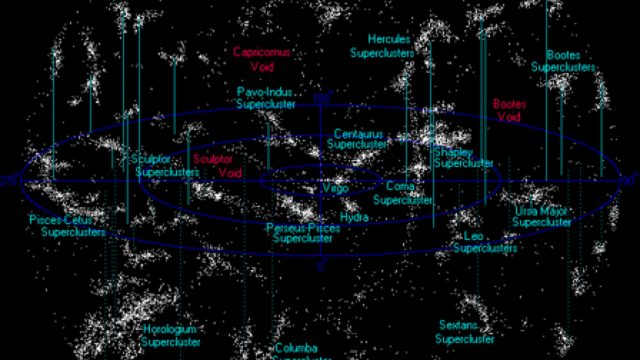
Source
When one sits and contemplates the landscape, it gives the sensation that everything is static and that we are totally stopped but it turns out that, meanwhile, the Earth is turning at more than 1,000 km/h on itself without disheveled ourselves and at more than 100,000 km/h around the Sun, which in turn revolves around the center of the Milky Way at about 750,000 km/h.
Cuando uno se sienta y contempla el paisaje da la sensación de que todo es estático y que estamos totalmente parados pero resulta que, mientras tanto, la Tierra está girando a más de 1.000 km/h sobre sí misma sin despeinarnos y a más de 100.000 km/h alrededor del Sol que a su vez gira en torno al centro de la Vía Láctea a unos 750.000 km/h.
So far this orgy of Coriolis effect is more or less assumable but it turns out that when cosmologists study the movement of the galaxy they discover that the Milky Way is traveling at more than 2,000,000 (two million) km/h towards a point to which , in the absence of knowing what it is or what it is composed of, cosmologists have given it the name "The great attractor".
Hasta aquí esta orgía de efecto Coriolis es más o menos asumible pero resulta que cuando los cosmólogos estudian el movimiento de la galaxia descubren que la Vía Láctea está viajando a más de 2.000.000 (dos millones) de km/h hacia un punto al que, a falta de saber que es o de que está compuesto, los cosmólogos le han dado el nombre de "El gran atractor".

Source
To know where our galaxy is going we have to see a little their distribution in our neighborhood, the Milky Way is part of a local group of galaxies together with Andromeda, the Triangulum galaxy and other 40 smaller galaxies whose diameter is of about 10 million light years, this seems a bestiality but you will see that it is not so much.
Para saber hacia donde se dirige nuestra galaxia tenemos que ver un poco la distribución de éstas en nuestro vecindario, la Vía Láctea forma parte de un grupo local de galaxias junto con Andrómeda, la galaxia del Triángulo y otras 40 galaxias más pequeñas y cuyo diámetro es de unos 10 millones de años luz, esto parece una bestialidad pero veréis que no es tanto.
In turn, this local group of galaxies belongs to a much larger group called the Virgo cluster that contains more than 1,300 galaxies, this in turn is part of another much larger group called the Virgo super cluster with a diameter of approximately 110 million light years and that it contains more than 100 groups like the Virgo cluster.
A su vez este grupo local de galaxias pertenece a una agrupación mucho mayor llamada cúmulo de Virgo que contiene más de 1.300 galaxias, éste a su vez forma parte de otro grupo mucho mayor llamado super cúmulo Virgo con un diámetro aproximado de 110 millones de años luz y que contiene más de 100 grupos como el cúmulo de Virgo.

Source
If you still have breath left, I will tell you that there is still more, after a study carried out in 2014, cosmologists realized that this supercluster, far from being something isolated, is part of a larger structure made up of more than 100,000 galaxies with a diameter of 500 million light years called Laniakea, Hawaiian word that means immense sky.
Si todavía os queda aliento os diré que aún hay más, tras un estudio llevado a cabo en 2014 los cosmólogos se dieron cuenta que este supercúmulo, lejos de ser algo aislado, forma parte de una estructura mayor formada por más de 100.000 galaxias con un diámetro de 500 millones de años luz llamado Laniakea, vocablo hawaiano que significa cielo inmenso.
This cluster of superclusters of galaxies is what would be our galactic neighborhood, it has in its center a gravitational anomaly located about 250 million light years away that drags the 100,000 galaxies, including ours, towards its center at more than 2 million km / h but what is there in the center of Laniakea?
Este cúmulo de supercúmulos de galaxias es lo que sería nuestro vecindario galáctico tiene en su centro una anomalía gravitacional situada a unos 250 millones de años luz que arrastra a las 100.000 galaxias, incluida la nuestra, hacia su centro a más de 2 millones de km/h pero, ¿que es lo que hay en el centro de Laniakea?
Well, the fact is that today it is not known for sure if what is in its center is an enormous concentration of mass, a black hole with the mass of billions of suns or some type of force capable of counteracting dark energy that makes the universe expand.
Pues el caso es que a día de hoy no se sabe a ciencia cierta se lo que hay en su centro es una enorme concentración de masa, un agujero negro con la masa de billones de soles o algún tipo de fuerza capaz de contrarrestar la energía oscura que hace expandirse el universo.
More information/Más información
Hola @mauromar, con razón nadie nos visita, somos tan pequeños que hasta pareciera que no existimos.

Downvoting a post can decrease pending rewards and make it less visible. Common reasons:
Submit
Outer space world has yet to be discovered
Downvoting a post can decrease pending rewards and make it less visible. Common reasons:
Submit
Seeing all that immensity we were speechless or breathless. I can only think of how happy we are every time we send a few robots to Mars, turns out that's absolutely nothing compared to the size of all those galaxies.
Downvoting a post can decrease pending rewards and make it less visible. Common reasons:
Submit
In a universe so immense and inscrutable,I can only add what Socrates said: "I only know that I know nothing." Saludos.
Downvoting a post can decrease pending rewards and make it less visible. Common reasons:
Submit